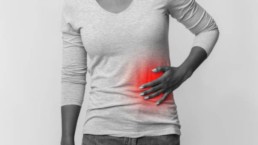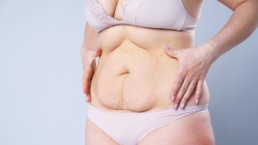Horrible Pain on Left Side After Gastric Bypass

Gastric bypass is one of the best options for bariatric surgery to help with weight loss. The recovery time depends on factors like your dietary habits, exercises, and other lifestyle changes.
Read more: Foods to Avoid After Your Gastric Bypass: What You Need to Know.
While the surgery is generally successful in helping people with weight loss goals, sometimes there can be post-operative complications like pain on the left side after gastric bypass. The cause of this pain could vary depending on a few factors. We will explain the possible causes and the treatment options available.
1) Dumping Syndrome
Dumping syndrome is one of the common causes of left-side pain after gastric bypass surgery. This condition occurs when food particles move too quickly through the stomach and small intestine and cause an influx of sugar into the bloodstream. Symptoms include abdominal cramps, nausea, vomiting, and diarrhea. If left untreated, these symptoms can cause dehydration and electrolyte imbalances.
2) Nutritional Deficiencies
In some cases, the cause of the abdominal pain after gastric bypass could be due to a post-operative complication. Such complications may include leaks in the gastrointestinal tract, internal hernias, and conditions like gallstones that were not previously known or detected before surgery. To identify potential issues, the patient needs to follow up with their doctor and get regular checkups post-surgery.
If a complication is identified, the patient will likely need to be hospitalized for corrective surgery, depending on its severity. Depending on the extent of damage caused by the complication, it may take some time for recovery and a return to normal activities.
3) Post-operative Complications
In some cases, the cause of the abdominal pain after gastric bypass could be due to a post-operative complication. Such complications may include leaks in the gastrointestinal tract, internal hernias, and conditions like gallstones that were not previously known or detected before surgery. To identify potential issues, the patient needs to follow up with their doctor and get regular checkups post-surgery.
If a complication is identified, the patient will likely need to be hospitalized for corrective surgery, depending on its severity. Depending on the extent of damage caused by the complication, it may take some time for recovery and a return to normal activities.
4) Irritable Bowel Syndrome (IBS)
IBS is a digestive disorder characterized by abdominal pain, gas, and changes in bowel patterns. Symptoms of IBS can worsen after gastric bypass surgery due to the changes in diet and the alteration of normal digestive processes. It is essential to consult a doctor if you experience left-sided pain, discomfort, or abdominal cramping associated with IBS after gastric bypass surgery. In some cases, medications may be necessary to manage the symptoms of IBS.
5) Gallbladder Issues
The gallbladder stores and concentrates bile produced by the liver, which helps break down and digest food in the small intestine. After gastric bypass surgery, the gallbladder’s role is reduced due to changes in digestion. As a result, it may become enlarged, inflamed, or blocked with stones, leading to under the left rib cage.
The severity of this pain can vary. It may range from a mild, constant ache to sharp, intense pain in waves.
Contact Hospital BC for the best gastric bypass in Mexico. We offer the highest quality care and surgery in an environment that promotes safety. Our weight loss procedures are performed by experienced and certified specialists who provide the best care for all patients.
Liposuction Or Coolsculpting: Which Is Better for Your Goals?

While a healthy diet and regular exercise are the best way to achieve a slim and toned figure, they can only do so much. For those looking to remove stubborn fat deposits resistant to diet and exercise, there are two popular cosmetic procedures: liposuction and CoolSculpting. Liposuction is a procedure that removes fat deposits from the body using a cannula and suction. CoolSculpting is a non-invasive procedure that uses cooling technology to freeze fat cells, causing them to be processed out of the body naturally.
Read more: How Much Weight Is Lost With Liposuction?
The liposuction and CoolSculpting procedures can effectively remove stubborn fat deposits and help you to achieve a more contoured figure. However, the proper treatment for you will depend on your individual goals, body type, health history, lifestyle factors, and other considerations. Here’s how you can choose.
How Does Liposuction Work?
Liposuction is a procedure to remove fat from areas of the body. A thin cannula is inserted into the fat deposits and suctioned out through the vacuum device. This method can help reshape and contour different body parts, such as thighs, buttocks, abdomen, arms, neck, and chin. Liposuction can also remove excess fat from other areas, such as the face and neck.
Some benefits of liposuction include the following:
a) Removes a large amount of fat in one procedure
b) Results can be seen immediately
c) Can target specific areas of the body for contouring and sculpting
d) Requires only local anesthesia, which means less risk than general anesthesia.
How Does CoolSculpting Work?
When it comes to CoolSculpting, the process works by using a device to freeze fat cells. The frozen cells are then naturally broken down and processed out of the body over time. The science behind this method is called “cryolipolysis,” which is why it’s sometimes referred to as “freezing the fat.”
Some reasons to choose CoolSculpting to include the following:
a) It is quick and non-invasive, meaning you can return to your routine immediately after the treatment.
b) It requires no anesthesia.
c) There is typically minimal discomfort during the procedure.
d) Results are usually seen within a few months following the session.
Factors To Check While Choosing Between Liposuction and CoolSculpting
Here are factors you should consider while deciding between liposuction and coolsculpting:
a) Age
CoolSculpting is generally recommended for those under the age of 40 and within 30 pounds of their body weight, as it works best for smaller areas of fat. Liposuction is a better option for older patients seeking more dramatic results from larger fat deposits.
b) Fat Distribution
CoolSculpting targets unwanted fat in specific areas, such as the abdomen, love handles, thighs, and arms. It may also reduce a double chin or eliminate stubborn fat pockets on the flanks. Liposuction can work well for larger deposits of fat all over the body that are resistant to diet and exercise.
c) Skin Tone
CoolSculpting works best for those with good skin tone, as it can tighten and contour the skin in areas where fat has been removed. Liposuction is usually better for those with poor skin tone or loose, sagging skin around the treated area.
Call Hospital BC for the best liposuction in Tijuana. We can help you decide whether liposuction or coolsculpting is the best option for your body sculpting goals.
How To Get Rid of Seroma After Tummy Tuck?

One of the popular weight loss solutions is getting a tummy tuck, also known as abdominoplasty. This option involves removing excess fat and skin, tightening the abdominal muscles, and repositioning the navel to create a more appealing figure.
Read more: How Long Does a Tummy Tuck Procedure Take From Intake to Dismissal?
However, one of the possible post-operative complications is seroma formation. Seromas are fluid pockets that collect beneath the skin after tummy tuck surgery. They can cause discomfort and swelling in the area. Read on to understand how to eliminate a seroma after a tummy tuck.
How Is Seroma Formed and How Can It Be Avoided?
Seroma is a collection of fluids in the area where the tissue was removed during a tummy tuck procedure. Seroma can be caused by several factors, including:
1) Excessive handling of the tissue during the procedure
2) Poor drainage from the surgical site
3) High tension placed on the skin flap after a tummy tuck
4) Too much pressure applied to the area
Some signs of seroma are:
a) Swelling
b) Skin discoloration
c) Hardened area in the surgical site
d) Fluid drainage from the incision
To avoid seroma, following your doctor’s post-operative instructions is essential.
Here are some ways to treat seroma.
1) Pressure Garment
A pressure garment is made of an elastic material that applies pressure and helps reduce swelling. This garment should fit snugly around the surgical site, which will help to shrink the seroma.
2) Sterile Dressings
Your doctor may recommend you change your sterile dressings regularly to ensure proper healing and to prevent infection.
3) Massage Therapy
Massaging the area gently can help to reduce the swelling. This should be done in a circular motion with light pressure.
4) Drainage Tube
Your doctor may insert a drainage tube to remove excess fluids or blood from the seroma. The tube will then be removed, and the healing process can continue.
5) Steroid Injections
Steroids are injected directly into the seroma to help reduce swelling and promote healing. This should only be done as a last resort, as these injections may cause side effects.
Tips To Prevent Seroma
Seroma occurs when the body accumulates fluids in the area where the tissue was removed. Here are some tips to prevent seroma:
1) Quilting
Quilting is stitching the skin together to provide support and reduce tension in the area. This can help prevent seromas from occurring.
2) Avoid Excess Movement
Excessive movement can cause the tissue in that area to become damaged or dislodged, leading to seroma formation. Keeping the surgical site as still as possible is essential to prevent this.
3) Keep the Area Clean
Keeping the surgical site clean is essential to prevent infection, which can lead to seroma formation. Be sure to wash your hands thoroughly before and after cleaning the area.
4) Monitor Your Diet
Eating a balanced diet with plenty of fluids reduces swelling and promotes healing. Foods like salmon, nuts, and leafy green vegetables provide essential nutrients needed for healing.
Contact Hospital BC for the best tummy tuck procedure in Tijuana. We provide the most innovative and safest tummy tuck procedures with our highly experienced and certified plastic surgeons.
5 Tips for Holiday Eating After Weight-Loss Surgery

Weight loss surgery is a significant event in a person’s life, and the holidays can present unique challenges. Holiday meals tend to be high in caloric content, as well as being filled with tempting treats. It is essential for those who have recently undergone weight loss surgery to remember that it is possible to enjoy the holiday season without undermining their new healthy habits.
For example, you may need to take vitamins and supplements after surgery to avoid nutritional deficiencies.
Read more: Bariatric Surgery: What Happens If You Don’t Take Vitamins After Surgery?
Eating a balanced diet can help you maintain your post-surgery weight and health.
Here are five tips for holiday eating after weight loss surgery:
1. Pace Yourself
Holidays come with many tempting food options, but if you’ve had weight loss surgery, it’s essential to take things slow. Eating too quickly or taking in too much can cause bloating or discomfort. To prevent this, try to eat a few bites at a time and chew thoroughly–it will help you savor the flavor and give your body the time it needs to process food.
2. Watch Your Portion Sizes
Weight loss surgery has a lot of benefits, but one of them is limited portions! To maintain your progress, be mindful of how much you eat, and remember that you can leave your plate alone. Try to stick with small portions and opt for healthier dishes. If you’re starving, choose foods high in fiber and protein and low in sugar and fat.
3. Stay Hydrated
Drinking plenty of water is vital for weight-loss surgery patients, especially during the holidays when there may be more tempted to indulge in sugary drinks like eggnog, sodas, and other calorie-rich beverages. It’s vital for weight-loss surgery patients to drink at least six to eight glasses of water daily and increase their intake when socializing or attending parties during the holidays.
Water helps to reduce hunger and cravings, keeps you feeling full longer, flushes out toxins, and helps to avoid constipation. Staying hydrated helps keep you focused on your weight-loss goals during the holidays when other tempting treats are available.
4. Exercise and Stay Active
Exercise can help you maintain your weight loss, burn calories and generally keep in shape. Even if you don’t feel like exercising, find some physical activity that suits your lifestyle. Consider taking a walk, doing yoga, or even dancing around the house. Whatever it is, stay active during the holidays so that all your hard work post-surgery doesn’t go to waste.
5. Set Realistic Goals
It’s essential to be realistic when setting weight loss and health goals. Avoid fad diets and extreme calorie restrictions, as these can lead to unhealthy eating habits. Instead, create achievable goals like eating a healthy breakfast daily or walking for 30 minutes sometimes weekly. This way, you can stay on track with your weight-loss goals without feeling overwhelmed.
If you choose a weight loss surgery in Mexico, contact Hospital BC. We provide safe and affordable bariatric surgery options to patients from the United States. Our bariatric surgery team offers personalized care and attention to patients throughout their weight loss journey.

